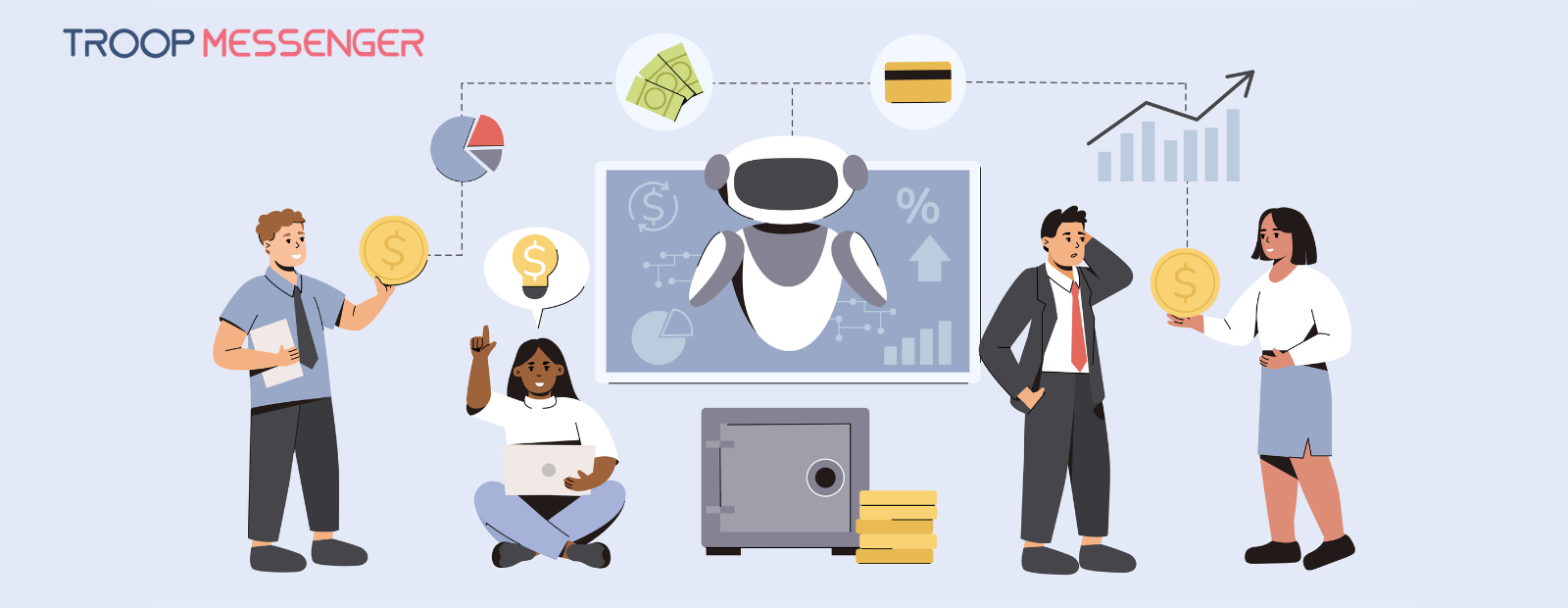Connect with us

Top Features of Modern Law Practice Management Software
Over the past couple of years, the way legal professionals manage their day-to-day activities has changed because of law practice management software solutions. Such tools help in the smooth flow of operations, make client communication better, and ultimately boost productivity. A legal practitioner can manage their practice effectively with a clear understanding of these systems' key functionality.
Almost every industry has been shaped by digital tools, and the legal sector has not remained untouched. The tedious manual effort once needed across multiple spreadsheets, filing cabinets, and tracking systems can now be streamlined into one cloud-based application. Thus, law practice management software is important not just to make daily activities more convenient but also to enable lawyers to spend more time fighting for their clients and researching laws instead of necessary but time-consuming administration.
Client Management
Law practice management software provides you with a client database where professionals can save details related to their clients. Using this capability, information about clients is always up-to-date, thus enabling better communication with clients and building a better clientele. So, tracking the interaction history and case status enables transparency, which is essential for customer happiness.
A good client management module often helps attorneys log the names and addresses, but also notes on his or her preferences, communication styles, billing history, and any previously relevant legal issues, all in one place. Others incorporate conflict-checking modules to guarantee ethical compliance before accepting a new matter. Some more advanced solutions also add client portals, allowing clients to securely sign in and get access to case updates, invoices, or other shared documents. This transparency builds trust and funnels many of the repetitive phone calls and emails a firm receives, allowing staff to focus on more valuable tasks.
Document Automation
For attorneys, efficient document handling is a fundamental task. Management software has document automation to make this easier. Attorneys often use contracts, whether contracts or even other legal documents, to produce them without delay. Error chances are lower with automated templates. Also, they save time. This is an excellent feature for practices that process a lot of paperwork, as it removes the variability.
Document automation makes a considerable difference in practice. Think about putting together a regular employment contract or a confidentiality agreement. The system can automatically fill regions with relevant client data stored in the database and generate a complete draft in seconds. More than just saving time, this feature also helps ensure compliance, as senior partners can sign off on templates in advance to control language and risk. For organizations managing large numbers of standardized submissions—such as real estate closings or immigration requests—document automation can equate to greater volume per case without the cost of hiring more staff. A few platforms also have e-signature integrations so that all documents can be executed remotely and securely, without the need for a face-to-face meeting.
Time Tracking and Billing
Time tracking is super critical for the legal profession. Integrated time tracking and billing features — Many modern systems are bundled with time tracking and billing capabilities. Lawyers can rely on these tools to record billable hours without any pain. Automating the system of automated billing helps create bills automatically after the services are rendered and significantly minimizes the chances of any errors or disputes. This adds to the financial side of legal work, allowing for more transparency in how clients are charged for work hours.
Accurate billing is directly linked with profits for many firms. Lawyers today can do it using mobile apps, desktop timers, and even automatic activity logging tied to specific case files. This helps ensure that every phone call, email, or research task can be captured as billable time. Billing functionalities are more than creating invoices and can include managing trust accounts, retainer management, and tiered rates based on individual attorneys or tasks. Clients win here because they get an itemized invoice on what went into the invoice, and there are fewer disputes about this. To add more flavour, most of the systems integrate with online payment gateways, which allows clients to pay their invoices securely via credit card or bank transfer with the push of a button. This is important for cash flow, especially for SMPS; a faster billing cycle leads to better cash flow.
Task and Calendar Management
Organizing tasks and timelines with much precision can be challenging in a constantly busy legal ecosystem. Task and calendar management are frequently some of the strongest features included in law practice software. Lawyers can efficiently impose deadlines, organize meetings, and assign tasks. Task reminders and notifications can help you prioritize tasks and assist you in meeting deadlines. This orchestration level is where the rubber meets the road in terms of productivity because it keeps legal professionals focused on their daily job, navigating complex DIY design projects instead of being corralled by administrative burdens.
It will have advanced calendar capabilities that sync with Outlook, Google Calendar, or iCal to ensure attorneys will not miss a court appearance or filing deadline. A number of them also offer role-based task assignment, where partners can delegate research and drafting tasks (as well as administrative tasks) to junior lawyers or paralegals while keeping overarching control of the project. Automated notifications for upcoming deadlines, court dates, or similar meetings with clients minimize the risk of human error. Docketing features automatically populate key dates using court rules, reducing hours of manual entry. A solid calendar system helps with productivity and protects against malpractice risk from a missed deadline.
Secure Communication
In practicing law, client communication comes with a significant need for security. Modern software is outfitted with secure channels, meaning sensitive information will be protected. They encrypt messages and files, ensuring clients never see non-public information. The clients get peace of mind knowing that their information is being well-kept.
Secure communication, especially in today’s cyber world, where threats are becoming more sophisticated daily, cannot be emphasized enough. Implement encrypted messaging portals to replace traditional e-mail providers, ensuring outsiders never intercept privileged information. Some systems even incorporate multi-factor authentication and audit trails that track who accessed documents and when. This, in turn, ensures that client data is secure and has a proper record, in case of any dispute. Lawyers can collaborate on sensitive documents without requiring third-party services to share files that may not have compliance certifications or may be prone to attacks, with secure file sharing through the client portals. Firms that work on very sensitive cases like mergers, criminal defense, or family law can offer more peace of mind to their clients with secure channels that keep their most private information secure and safe.
Analytics and Reporting
More legal practices are relying on data-driven decision-making. Law practice management software includes analytics and reporting tools, offering valuable insights into the practice. Lawyers can monitor important parameters like case milestones, revenue, and client satisfaction. These insights facilitate the determination of areas of improvement and guide decision-making processes. Real-time data access helps legal professionals adapt strategies quickly to align with business goals.
Analytics can show what practice areas are making the most money, what clients are returning, and what cases are using too much energy. Many dashboards in your practice management system show billable hours, accounts receivable, or progress on cases — all of which can help partners determine strategy more easily. Larger firms can even use reporting to monitor staff usage to distribute workloads more evenly. The software gets even fancier in predictive analytics, leveraging historical data to predict revenue trends or case outcomes. With a heavy dependence on actual data instead of guesswork, companies can enhance their pricing models, discover growth opportunities, and focus on customer satisfaction.
Integration with Other Tools
Generally, legal practitioners use several tools to manage the different aspects of their practice. Such integration speaks a common-purpose language of interconnectedness to coordinate the involved systems through API/SDK and cloud, enhancing operations, and eliminating the hassle of data entry; thereby eliminating the user error. Easy integration guarantees all devices (tools) perform together seamlessly, boosting operational efficiency.
Integrations can be to common platforms such as accounting software (e.g., QuickBooks), e-signature tools (e.g., DocuSign), and e-discovery tools. It also guarantees that data passes automatically between different systems without the concern of redundancy or missing data. For instance, if a client makes a payment against an invoice online, the transaction will automatically sync between the law practice management software and the accounting software, removing the need to reconcile transactions. Most solutions also connect to marketing automation platforms, making the ability to engage and convert leads more efficient for firms. Seamless connectivity between tools translates to less siloed and smoother operations, providing one practice data, a single source of truth.
User-Friendly Interface
However, in the case of law practice management software, a user-friendly interface is important for its fruitful adoption. The system is designed to be intuitive and easy to navigate so that every team member can use it. Various other resources for training and support also contribute to an improved user experience. With this accessibility and usability in your practice, you are unlocking your investment's full value with happy and productive staff.
Conclusion
Modern law practice management software provides many conveniences for legal professionals. They can serve several purposes, from client management to secure communication, while solving different legal practice requirements. With such software, lawyers can become more productive, provide higher client satisfaction, and improve results. Legal Technology is not a trend but a step towards delivering excellence in your service delivery.








